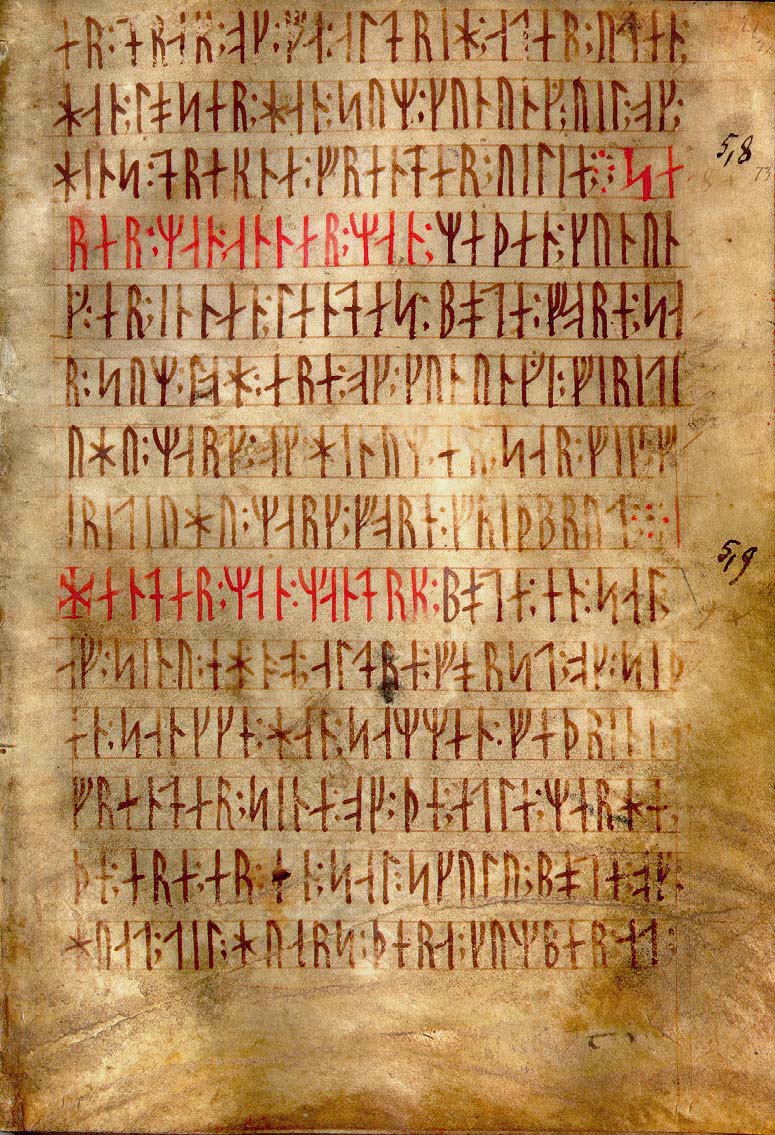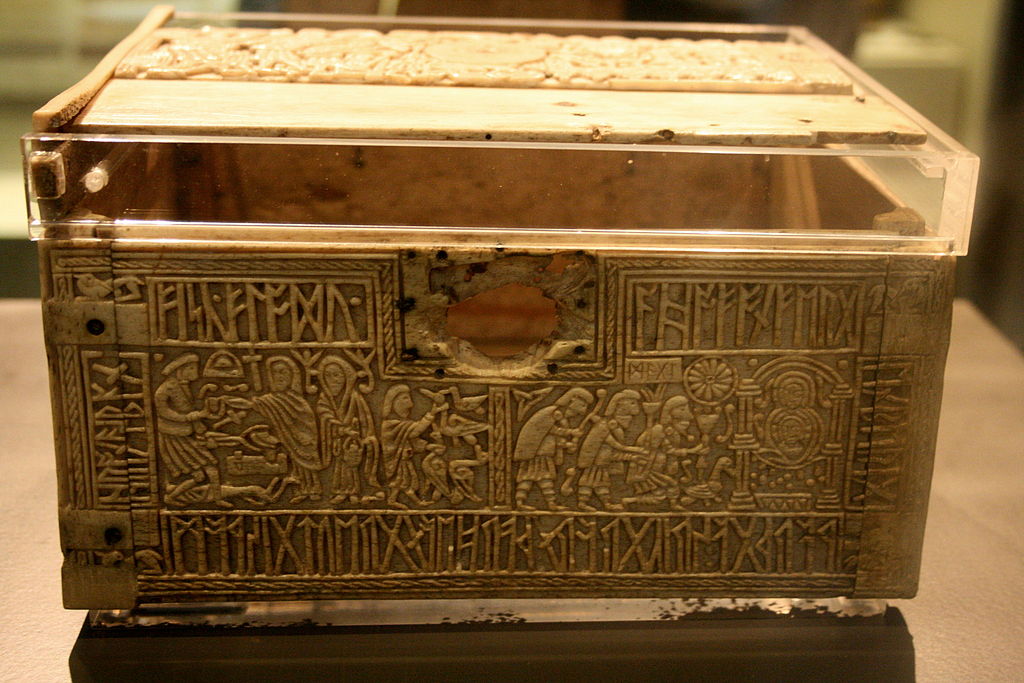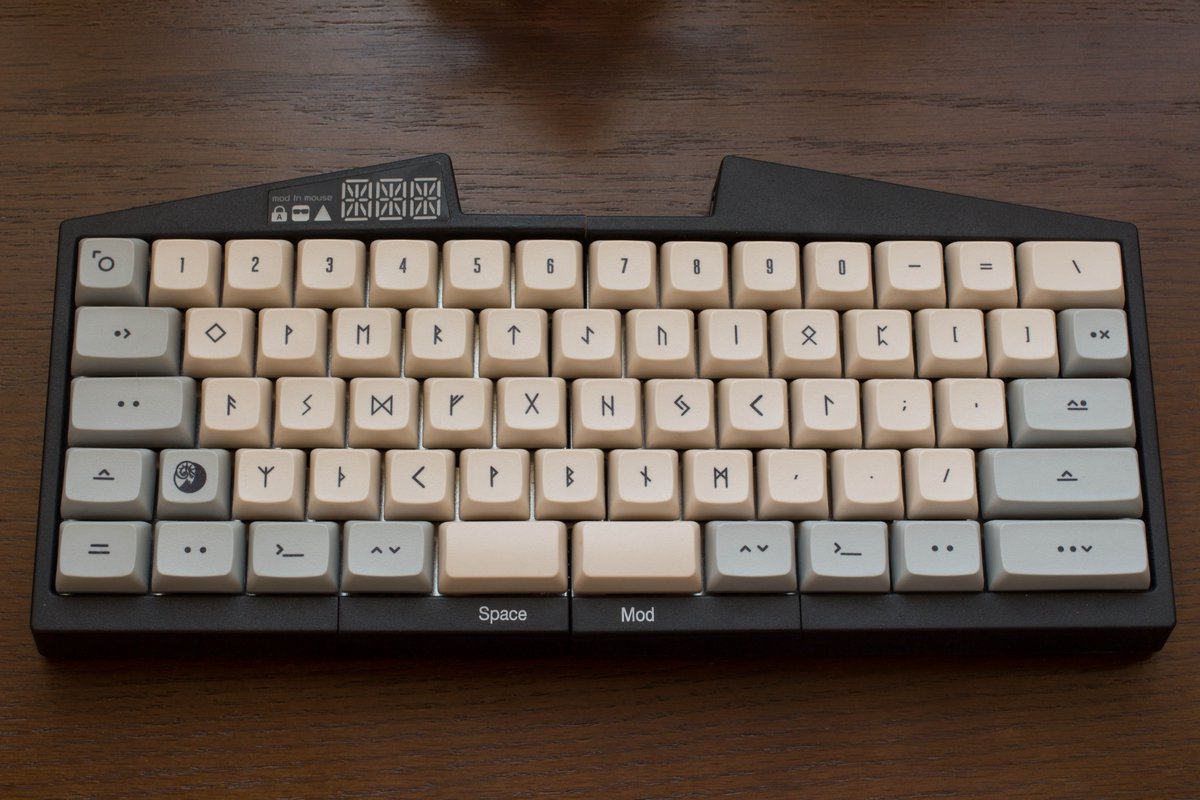Unicode: Rune ᚠ
Convert English to Rune
Unicode Rune Characters
ᚠ ᚡ ᚢ ᚣ ᚤ ᚥ ᚦ ᚧ ᚨ ᚩ ᚪ ᚫ ᚬ ᚭ ᚮ ᚯ ᚰ ᚱ ᚲ ᚳ ᚴ ᚵ ᚶ ᚷ ᚸ ᚹ ᚺ ᚻ ᚼ ᚽ ᚾ ᚿ ᛀ ᛁ ᛂ ᛃ ᛄ ᛅ ᛆ ᛇ ᛈ ᛉ ᛊ ᛋ ᛌ ᛍ ᛎ ᛏ ᛐ ᛑ ᛒ ᛓ ᛔ ᛕ ᛖ ᛗ ᛘ ᛙ ᛚ ᛛ ᛜ ᛝ ᛞ ᛟ ᛠ ᛡ ᛢ ᛣ ᛤ ᛥ ᛦ ᛧ ᛨ ᛩ ᛪ
Punctuation ᛫ ᛬ ᛭
Franks casket ᛴ ᛵ ᛶ ᛷ ᛸ
Calendar symbols ᛮ ᛯ ᛰ
Tolkien ᛱ ᛲ ᛳ
What is Runic Script
- Runic Script were used for several rune alphabets around year 150 to 1500.
- Runes are phonetic alphabet. Each letter represent a sound.
- Rune alphabets was used to write various Germanic languages before the adoption of the Latin alphabet.
Germanic languages
Germanic languages includes:
- North Germanic: Danish, Norwegian, Swedish, Icelandic, Faroese.
- West Germanic: English, German, Dutch.
- East Germanic (extinct): Gothic.
Types of Runic Alphabets
- Year 150 to 800. Elder Futhark.
- Year 400 to 1100. Anglo-Saxon runes. → extended and adopted for Old English.
- Year 700 to 1100. Younger Futhark. It has 2 variants, called Long-branch and short-twig.
- Year 1100 to 1500. Medieval runes
Note, there's also Tokien rune. It is based on Anglo-Saxon rune and used in the novel the Hobbit. Reference: 11096r-n4013r-runic-additions.pdf
Elder Futhark
ᚠ ᚢ ᚦ ᚨ ᚱ ᚲ ᚷ ᚹ ᚺ ᚾ ᛁ ᛃ ᛈ ᛇ ᛉ ᛊ ᛏ ᛒ ᛖ ᛗ ᛚ ᛜ ᛞ ᛟ
Anglo-Saxon Runes
ᚠ ᚢ ᚦ ᚩ ᚱ ᚳ ᚷ ᚹ ᚻ ᚾ ᛁ ᛄ ᛇ ᛈ ᛉ ᛋ (ᚴ) ᛏ ᛒ ᛖ ᛗ ᛚ ᛝ ᛟ ᛞ ᚪ ᚫ ᚣ ᛡ ᛠ
Younger Futhark, long-branch
ᚠ ᚢ ᚦ ᚬ ᚱ ᚴ ᚼ ᚾ ᛁ ᛅ ᛋ ᛏ ᛒ ᛘ ᛚ ᛦ
Younger Futhark, short-twig
ᚠ ᚢ ᚦ ᚭ ᚱ ᚴ ᚽ ᚿ ᛁ ᛆ ᛌ ᛐ ᛓ ᛙ ᛚ ᛧ
Medieval Runes
ᛆ ᛒ ᛍ ᛑ ᚧ ᛂ ᚠ ᚵ ᚼ ᛁ ᚴ ᛚ ᛘ ᚿ ᚮ ᛔ (ᛕ) ᛩ ᚱ ᛌ ᛋ ᛐ ᚢ ᚡ (ᚢ) ᚥ ᛪ ᛦ (ᚤ) (ᛨ) ᛎ ᚦ ᛅ ᛆ ᚯ

Half of a gilt silver mount. Length: 18.8 cm. With a uninterpretable (cryptic or magic) runic inscription:
ᛋᛒᛖᚱᚫᛞᚻᛏᛇᛒᚳᚪᛁ ᛖᚱᚻᚪᛞᚫᛒᛋ
(sbe/rædht3bcai/e/rh/ad/æbs)
Date: ~800.
Found in the Thames, near Westminster Bridge, London.

Franks Casket

The Franks Casket (or the Auzon Casket) is a small Anglo-Saxon whale's bone chest from the early 8th century. The casket is densely decorated with knife-cut narrative scenes in flat two-dimensional low-relief and with inscriptions mostly in Anglo-Saxon runes. Generally reckoned to be of Northumbrian origin, it is of unique importance for the insight it gives into early Anglo-Saxon art and culture. Both identifying the images and interpreting the runic inscriptions has generated a considerable amount of scholarship.
[from Wikipedia, 2019-06-03]
Rune Keyboard Keycaps
